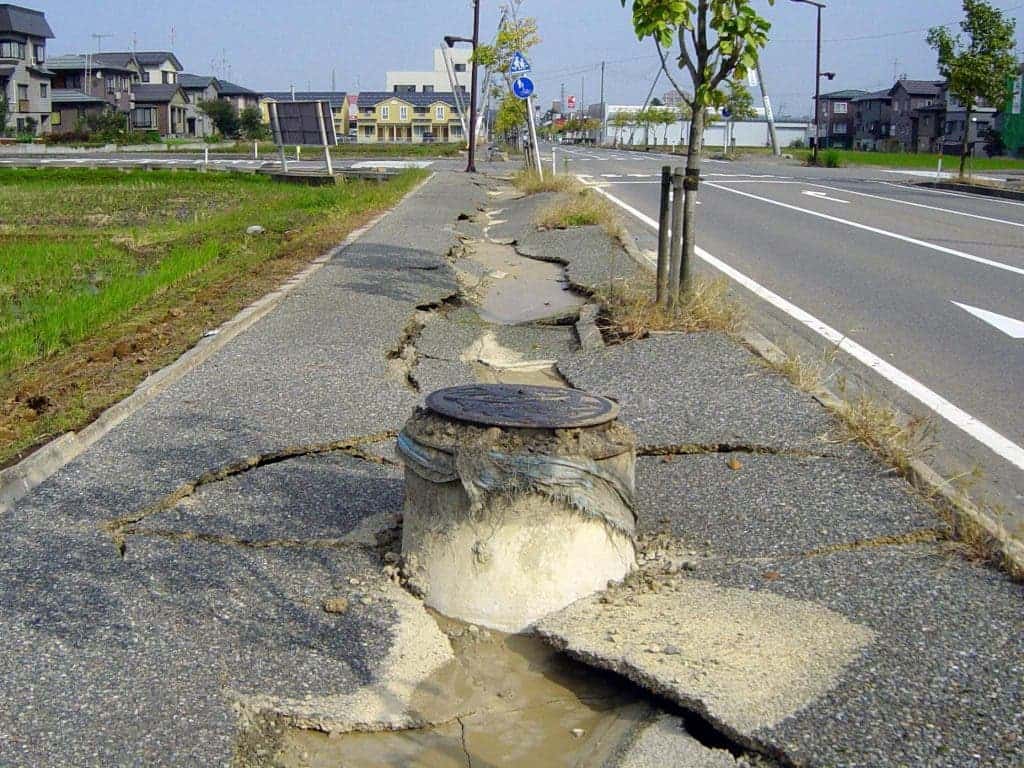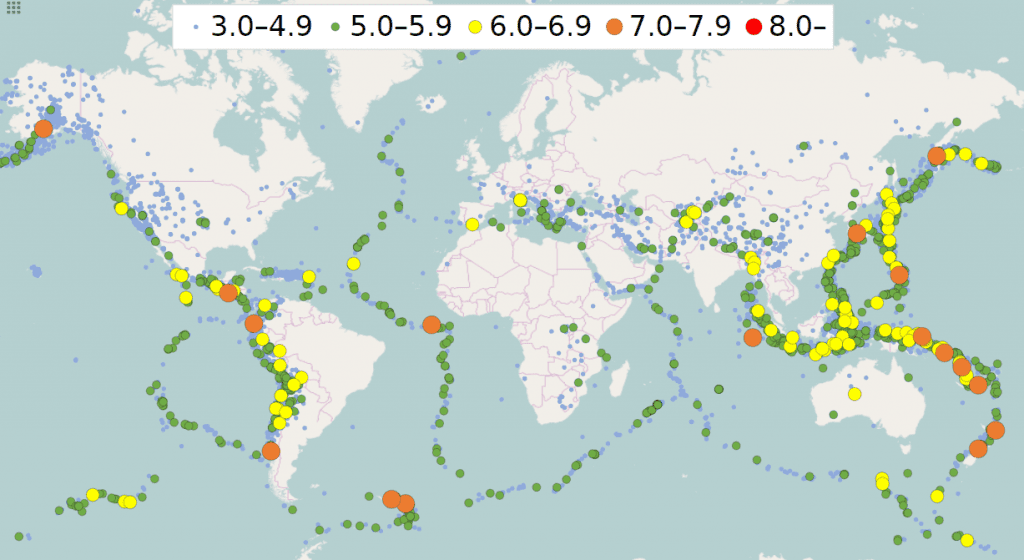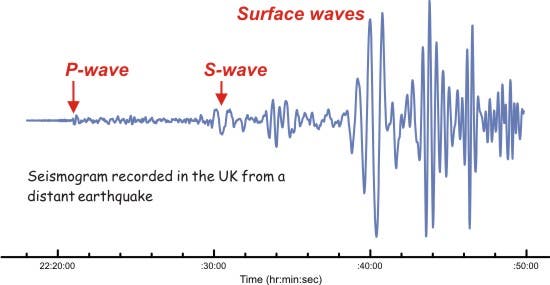Earthquakes are one of the most striking and impactful phenomena in nature. Depending on their cause, depth, and energy, earthquakes can be more or less damaging. Most earthquakes are barely even felt, but every once in a while, a big one comes along. Well-documented throughout human history, earthquakes can hit seemingly out of nowhere, and depending on their magnitude, damage or even destroy entire cities.

Earthquakes are individually unpredictable (no one can truly predict an individual earthquake), but researchers can assess the likelihood of an earthquake striking an area. This is why we know, for instance, that an earthquake in the San Francisco area is quite likely in the near future.
Some areas are more prone to earthquakes than others (areas around countries such as Chile or Japan, for instance), and this has to do with their geology and the mechanisms that produce earthquakes.
What Causes an Earthquake?
Earthquakes on Earth are mostly driven by plate tectonics. Essentially, the Earth’s outer shell (the crust) is divided into large slabs of rock called “plates”, like a jigsaw puzzle. These plates glide on the planet’s mantle and very slowly slide by each other, and sometimes, they collide with each other.
The vast majority of earthquakes happens around the edge of these tectonic plates — so much so that if you look at a global map of earthquakes, you can immediately tell where most of these edges are.

This geologic movement also causes displacement and stress inside the tectonic plates, producing geological faults. So essentially, an earthquake is caused by tectonic movement — or at least, most of them are.
Earthquakes can also be caused by volcanoes or even human activity; in addition, some very deep earthquakes (which occur at hundreds of km below the surface) are caused by mineral phase changes, with a mineral common in the upper mantle (olivine) undergoing a transformation that weakens the whole rock temporarily, causing it to collapse.
Earthquakes send out different types of waves, both towards the surface of the planet, and to the depths. The first and fastest waves are called the Primary (or P) waves. Neither these, nor the secondary (S) waves are considered to be very dangerous. Instead, the following waves, called surface waves, tend to do the most damage on the surface. This is why we sometimes get a warning of a few tens of seconds when it comes to an earthquake: because special equipment can already sense the P waves, and the surface waves arrive a bit later, as you can see on the following seismogram.

How to Stay Protected from Earthquakes?
If you live in an area that is predisposed to earthquakes (or plan on moving to one), it pays to have at least some basic idea of how to protect yourself and your property. Here are some of the basic tips, as recommended by the CDC:
- DROP down onto your hands and knees; do this before earthquake has a chance to knock you down. Keep in mind that you can still move in this position if necessary.
- COVER your head and neck (and your entire body if possible) underneath a sturdy table or desk. If there is no shelter nearby, get down near an interior wall or next to low-lying furniture that won’t fall on you, and cover your head and neck with your arms and hands.
- HOLD ON to your shelter (or to your head and neck) until the shaking stops. If the shaking shifts it around, move with it.

- If you are inside, stay inside.
- If you are in the kitchen and the stove is running, quickly close it before taking cover.
- If possible, quickly move away from glass, hanging objects, bookcases, china cabinets, or other large furniture that could fall. Watch for falling objects.
- If you are in bed and can’t reach shelter quickly, stay there and cover your head (or entire body) with a pillow.
Lastly, if your area is prone to earthquakes, you may also want to have a look at insurance. Since earthquakes are so unpredictable, insurance is the only way of ensuring that if damage does happen, you at least get reimbursed. Homeowner’s and renter’s insurance doesn’t typically secure the destruction of property caused by earthquakes. The only possible exception to this may be if your homeowner’s insurance policy covers fires caused by earthquakes.
Many individuals in densely populated areas deal with earthquakes, so the earthquake insurance cost generally isn’t very high – although the price will vary by region and property value.
Earthquakes can have a severe and long-lasting impact on people’s lives, and we’ve seen all sorts of disasters caused by earthquakes over the years. It’s important to be aware of any earthquake risks in your area, and try to choose earthquake-resistant buildings. If there are risks, take the necessary precautions and be on your toes should an earthquake actually happen.


